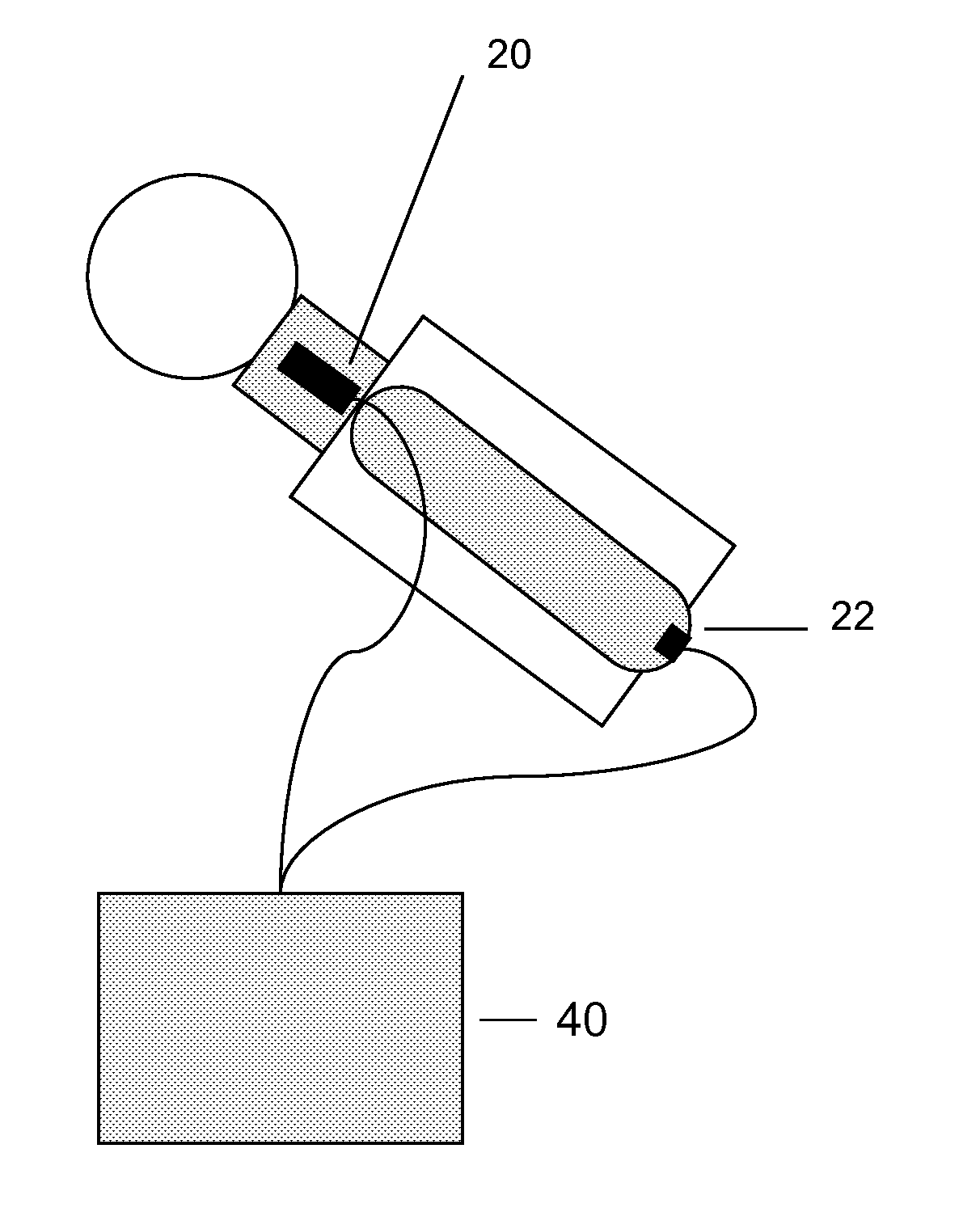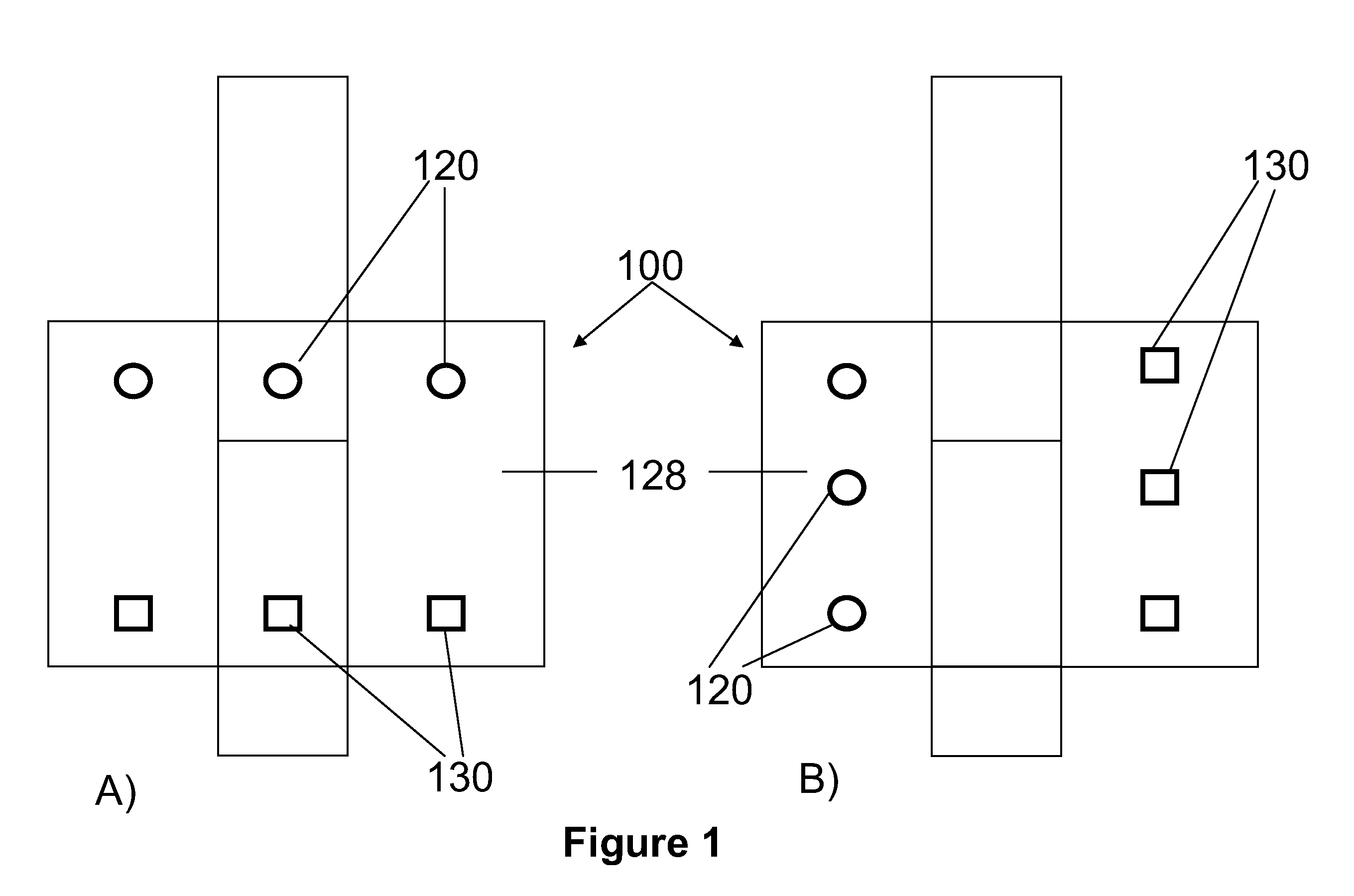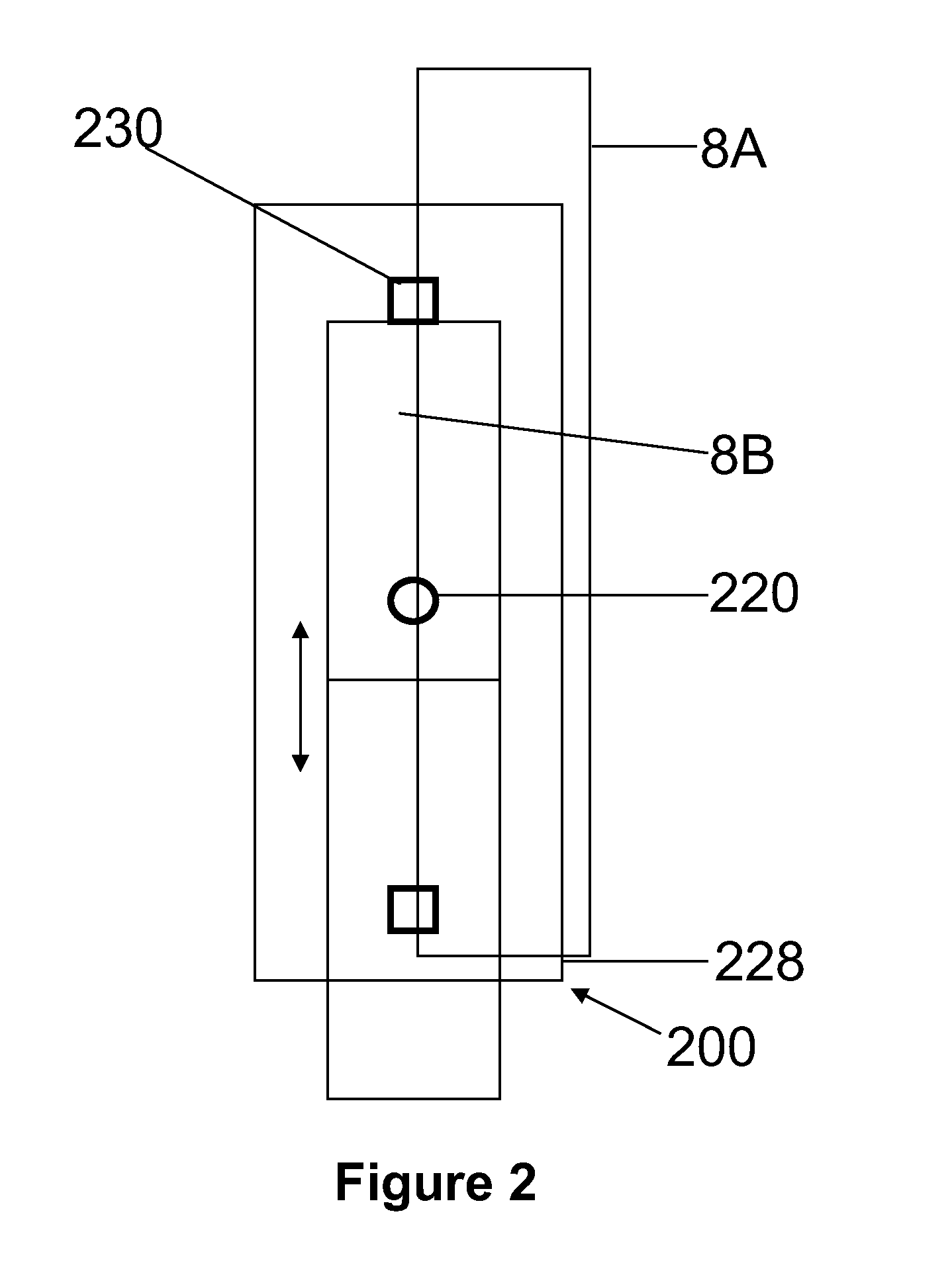System and method for non-invasive monitoring of cerebral tissue hemodynamics
a non-invasive, cerebral tissue technology, applied in the field of human vital functions monitoring, can solve the problems of neurological damage, severe, irreversible, non-invasive methods such as pulse oximtery cannot be used to obtain cerebral venous blood oxygenation, and it is difficult for light to penetrate through the skull and reach the cerebral tissues
- Summary
- Abstract
- Description
- Claims
- Application Information
AI Technical Summary
Benefits of technology
Problems solved by technology
Method used
Image
Examples
example 1
Measurement of Cerebral Oxygenation in a Patient
[0061]The cerebral tissue oxygenation of a human subject was obtained using a system as shown in FIG. 6. The patient lay on a chair at about a 30 degree recline. The first module of the system, e.g. sensor patch, was placed on the neck of the patient at a site over the internal jugular vein. The second module (oximeter sensor patch) was placed on the index finger tip of the patient. While the patient maintained normal breathing, jugular venous pulse (output signal) was obtained from the first module and cardiac arterial pulse (output signal) was obtained from the second module. The signals were received by the signal processing module, processed as described above, to yield a jugular venous waveform (FIG. 7A), a cardiac arterial waveform (FIG. 7B) and a cerebral venous waveform (FIG. 7C). The amplitude of the detected signals is represented along the y-axis while the x-axis represents time. The signal processing module utilized this si...
PUM
 Login to View More
Login to View More Abstract
Description
Claims
Application Information
 Login to View More
Login to View More - R&D
- Intellectual Property
- Life Sciences
- Materials
- Tech Scout
- Unparalleled Data Quality
- Higher Quality Content
- 60% Fewer Hallucinations
Browse by: Latest US Patents, China's latest patents, Technical Efficacy Thesaurus, Application Domain, Technology Topic, Popular Technical Reports.
© 2025 PatSnap. All rights reserved.Legal|Privacy policy|Modern Slavery Act Transparency Statement|Sitemap|About US| Contact US: help@patsnap.com



